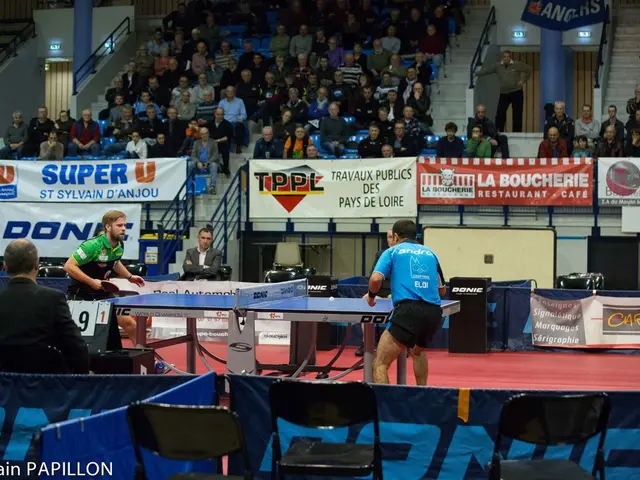Strategic Timing in Blackjack: Understanding When to Deal a Blow (and When to Hold Back)
In the world of blackjack, knowing when to hit and stand can significantly impact your chances of winning. Here's a breakdown of the basic strategy, which helps balance the risk of busting against the dealer's potential hand.
### When to Hit
For starters, always hit if your hand value is 8 or less. You can't bust with one more card, and you need to improve your hand [1].
If you have a 9, hit against dealer up cards of 2, 7, 8, 9, 10, or Ace. These situations are less favorable for doubling down or standing [1].
With a 10, hit if the dealer shows a 10 or Ace, as your 10 is unlikely to win outright, and a hit may improve your hand [1].
For a 12, hit against dealer cards 2, 3, 7 through Ace, as the dealer's strong card warrants trying to improve your hand [1].
If you have 13 or 14, hit if the dealer shows any card 7 or higher (including Ace), as the dealer’s strong hand means you need a better total [1].
Soft hands (hands with an Ace counted as 11) generally may hit, except in some doubling scenarios, for example, A,7 hits if dealer shows 9 or higher [2].
### When Not to Hit (i.e., Stand)
Always stand on hard hands of 17 or higher, as hitting risks busting, and you already have a strong total [1][2].
Stand on hard 13 to 16 if the dealer shows 2, 3, 4, 5, or 6, because the dealer has a higher chance of busting, making it better to play safe [1][2].
Specifically, stand on 12 if the dealer shows 4, 5, or 6, as hitting here risks busting against a dealer weak card [2].
Soft hands like A,9 always stand, and A,8 stands except when doubling is favorable [2].
### Summary Table: Hit or Stand in Basic Strategy
| Player Hand | Dealer Up Card | Action | |-------------------|------------------------|---------------| | 8 or less | Any | Hit | | 9 | 2, 7, 8, 9, 10, Ace | Hit | | 10 | 10 or Ace | Hit | | 12 | 2, 3, 7, 8, 9, 10, Ace| Hit | | 13-14 | 7 or higher (7-Ace) | Hit | | 12 | 4, 5, 6 | Stand | | 13-16 | 2, 3, 4, 5, 6 | Stand | | 17 or higher | Any | Stand | | A,9 | Any | Stand | | A,7 | 9 or higher | Hit |
This strategy helps minimize the house edge and maximize expected returns [1][2].
### Additional Notes
- The dealer must hit if showing 16 or less and stand on hard 17 or more; some rules differ on soft 17 [3][4]. - Other strategic moves like doubling down and splitting depend on specific hands and dealer cards but are separate from hit/stand decisions [1][2].
This advice aligns with widely accepted basic Blackjack strategy charts used by experienced players. For more advanced strategies, consult a comprehensive blackjack guide or a trusted online resource.
[1] BlackjackApprenticeship.com [2] Wong, P. A. (1991). Professional Blackjack. Huntington Press. [3] Griffin, M. (2013). Blackjack: The Complete Guide to Playing 21 as a Profession. Kensington Publishing Corp. [4] Snyder, D. (2006). The Blackjack Formula: The Mathematics of Winning. John Wiley & Sons.
In the realm of casino-games like blackjack, a popular casino-and-gambling game, understanding when to hit and stand is crucial, as it can significantly impact your chances of winning. For instance, when you have a soft hand (a hand with an Ace counted as 11), you usually hit, except in some doubling scenarios, such as A,7 hitting if the dealer shows 9 or higher. On the other hand, always stand on hard hands of 17 or higher because hitting risks busting, and you already have a strong total. Lastly, to further enhance your skills, consider reading blogs or consulting comprehensive blackjack guides for more advanced strategies.




